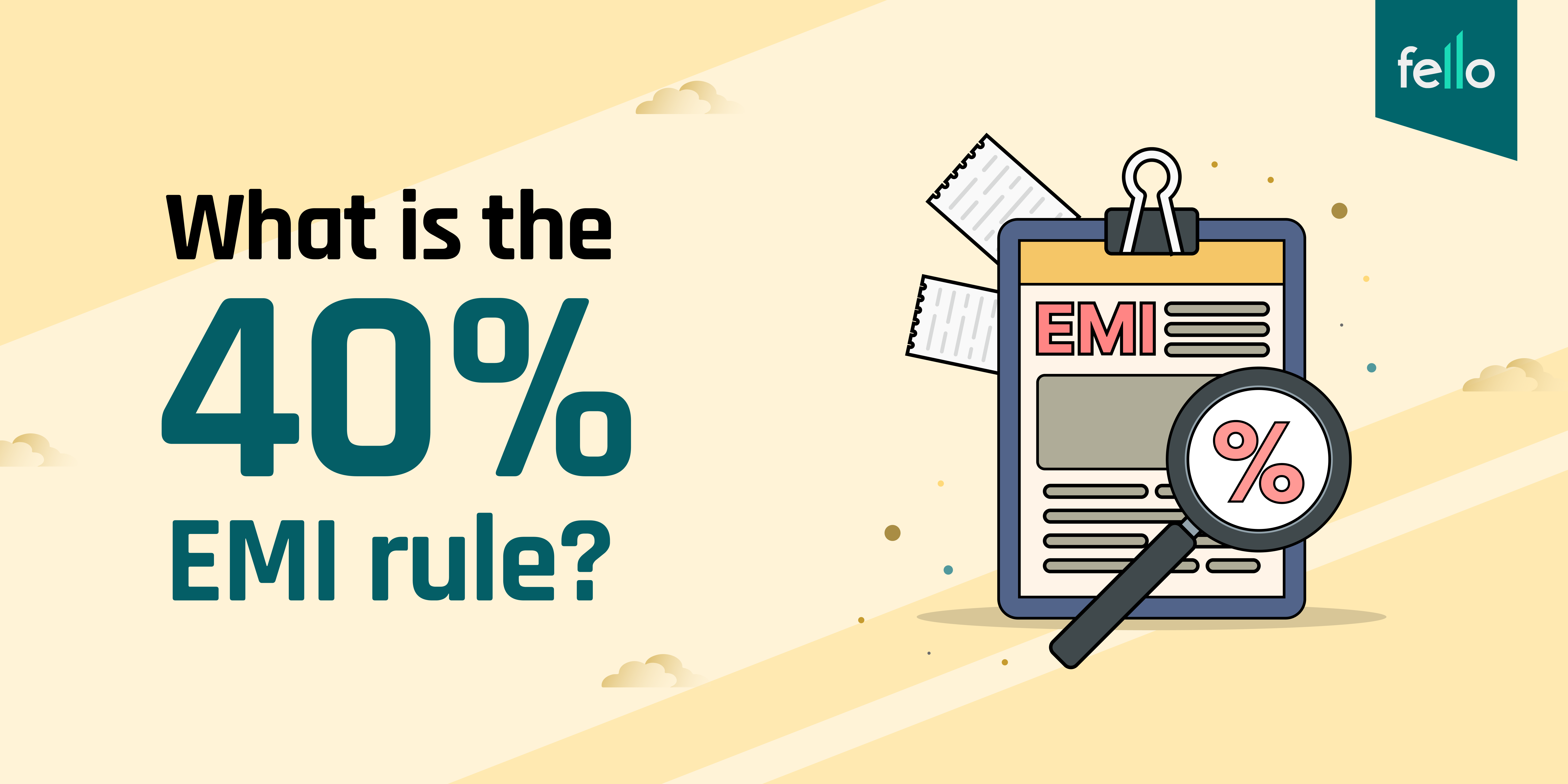When you’re planning to take a loan, especially for a house, car, or even personal needs, understanding how much you can safely borrow is crucial. One popular guideline that financial institutions and experts often mention is the 40% EMI rule. But what is the 40% EMI rule, and why does it matter so much? In this blog, we’ll break it down in simple terms so you can make smart financial decisions.
What is the 40% EMI Rule?
The 40% EMI rule is a financial guideline used by banks and lenders to determine how much of your monthly income can safely go towards Equated Monthly Installments (EMIs). According to this rule, your total EMI obligations should not exceed 40% of your monthly income.
This rule ensures that you have enough money left for daily expenses, savings, and emergencies even after paying off your loans. It’s a key metric lenders use when evaluating loan eligibility to reduce the risk of default.
Why Does the 40% EMI Rule Matter?
- Helps You Avoid Over-Borrowing: Keeps you within a safe borrowing limit.
- Improves Loan Approval Chances: Banks prefer applicants within this bracket.
- Ensures Better Money Management: Helps maintain a balance between loan repayment and living expenses.
How is the 40% EMI Rule Calculated?
Here’s how the rule works in practice:
| Monthly Income (INR) | Maximum EMI Allowed (40%) |
| ₹30,000 | ₹12,000 |
| ₹50,000 | ₹20,000 |
| ₹75,000 | ₹30,000 |
| ₹1,00,000 | ₹40,000 |
So, if your monthly income is ₹50,000, you shouldn’t be paying more than ₹20,000 in total EMIs.
What Counts as EMI Under This Rule?
The 40% limit includes all types of loan EMIs, such as:
- Home loans
- Car loans
- Personal loans
- Education loans
- Consumer durable loans
It doesn’t include rent, utility bills, or credit card minimum payments, although these should still be considered in your overall budgeting.
Benefits of Following the 40% EMI Rule
- Financial Stability: Avoids liquidity crunches during emergencies.
- Lower Risk of Default: Easy EMI management prevents missing payments.
- Healthy Credit Score: Regular EMI payments within your income limit boost your creditworthiness.
- Stress-Free Living: You won’t feel constantly burdened by loan repayments.
Exceptions to the Rule
While it’s a good rule of thumb, some situations may require deviation:
- High-income individuals with low fixed expenses may afford more than 40%.
- Business owners with variable income may follow a more conservative ratio (30% or less).
- Dual-income households can distribute EMIs across both partners’ incomes.
How Banks Use the 40% Rule in Loan Approval
Most banks assess your Debt-to-Income (DTI) ratio before approving your loan. If your EMIs exceed 40%, they may:
- Reduce the loan amount.
- Increase the tenure to lower EMI.
- Ask for a co-applicant.
- Reject the application.
Tips to Stay Within the 40% EMI Limit
- Choose longer tenures for lower EMIs.
- Prepay smaller loans to free up EMI space.
- Avoid taking multiple loans at the same time.
- Use loan eligibility calculators to stay informed.
When You Can Go Beyond 40%
If you have:
- A stable, growing income
- No other fixed obligations
- Substantial savings or emergency fund
Then exceeding the 40% rule slightly may still be manageable. However, it’s always best to tread cautiously.
Comparison with Other EMI Rules
| Rule | EMI Limit | Best For |
| 30% Rule | 30% of income | Conservative borrowers |
| 40% Rule | 40% of income | Balanced approach for most people |
| 50/20/30 Budget** | Not EMI-specific | Overall budgeting method |
Should You Always Follow the 40% EMI Rule?
Not always. Life situations, income sources, and lifestyle vary. While the rule provides a general safety net, personal circumstances should guide your final decision. Some people can comfortably manage 45-50%, while others may struggle at 30%.
Conclusion
Understanding what is the 40% EMI rule is essential for anyone considering a loan. It’s a smart, practical guideline that ensures you borrow within your means and maintain financial well-being. While it’s not a one-size-fits-all solution, it offers a reliable benchmark to help manage your debt and safeguard your financial future.

